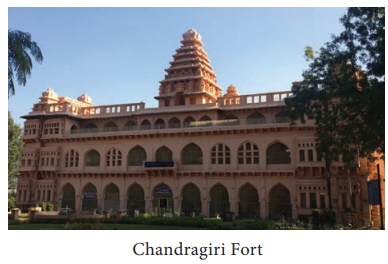Arrival of Europeans and the Aftermath - Advent of the British | 11th History : Chapter 16 : The Coming of the Europeans
Chapter: 11th History : Chapter 16 : The Coming of the Europeans
Advent of the British
Advent of the British
The English East India Company
A group of wealthy merchants of Leadenhall Street
in London secured a royal charter from Queen Elizabeth I to have a share in the
lucrative spice trade with the East. The Company, headed by a governor, was
managed by a court of 24 Directors. In 1611, King James I obtained from Mughal
Emperor Jahangir through William Hawkins, permission for regular trade. The
English obtained some trading privileges in Surat. In 1615–19 Sir Thomas Roe
was sent as an Ambassador of the English King James I. The Viceroy of Gujarat,
Prince Khurram granted trading privileges, but the British could not operate
freely because the Portuguese exercised a powerful influence in the region.
Madras was ceded to East India Company in 1639 by
the Raja of Chandragiri with permission to build a fortified factory which was
named Fort St. George. This was the first landholding recorded by the Company
on Indian soil.
In 1645, the ruler of Golkonda overran the
territories under the Company’s control in Madras. Aurangzeb conquered Golkonda
in 1687 and brought the Company territories under Mughal rule. But the
privileges granted to the English continued. Within a short time Madras
replaced Masulipatinam as the headquarters of the English on the Coromandel Coast.
The island of Bombay, which Charles II had inherited as dowry, was transferred
to the Company in 1668.The Charter of 1683 empowered the Company to raise
military forces and the right to declare war or make peace with the powers in
America, Africa and Asia. In 1688 Madras had a municipal government with a
Mayor. In 1693 the Company obtained another grant of three villages surrounding
Madras and in 1702 five more villages were granted.

Bengal
In Bengal it was a long drawn struggle for the
British to obtain trading rights. The Company obtained trading privileges from
Shah Shuja, the second son of Shajahan and the Governor of Bengal, but there
was no royal confirmation of such privileges. The trading rights for the
British in Bengal were obtained only in 1680. Local officials interfered with
the trading rights of the British and this resulted in the Company declaring
war with the ruler representing the Mughals. Peace was restored in 1690 and the
Company established its first settlement at Sultanuti, a site which became the
future Calcutta. The factory was fortified in 1696 and in 1698 the Company
secured the zamindari rights over three villages, Sutanuti, Kalikata and
Gobindpur in return for a payment of 1200 rupees a year. The fortified factory
was called Fort St. William which became the headquarters of the Presidency in
1770.
Norris Mission
Sir William Norris, sent by the
English King William III in 1698, met Aurangzeb to get full English
jurisdiction over the English settlements. This was to confirm the existing
privileges and to extend their trading rights further. But this request was
conceded only during 1714- 17, when a mission under Surman sent to the Mughal
Emperor Farukhsiyar obtained firman
(grant of trading rights) addressed to the local rulers of Gujarat, Hyderabad
and Bengal.
Related Topics